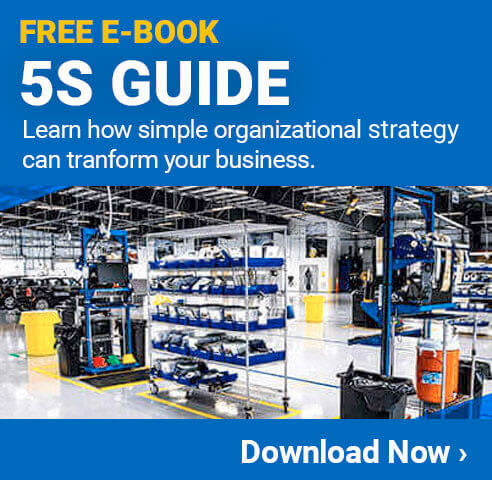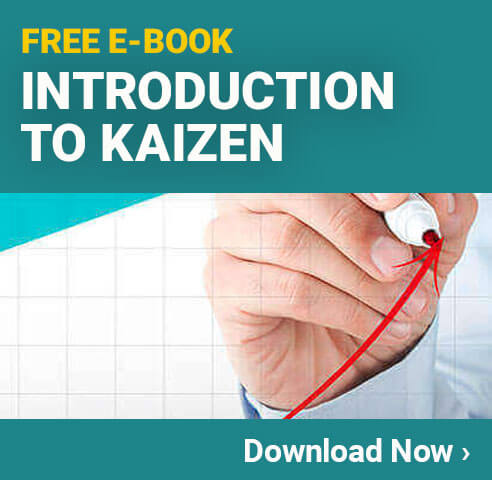
The organizational development process is an action-based research model designed to help the user understand known problems, set measurable goals, implement changes, and analyze results.
Organizational development has been something that many businesses have taken seriously since at least the 1930's. Like many other process improvement methodologies, the organizational development process takes advantage of a circular set of steps that can be repeated to make changes, test them out, and then adjust further until the desired results have been achieved.
The Organizational Development Process Cycle

Organizational development begins when a problem is identified. This system can be used to make improvements on just about any situation or problem that a business can face. It is a broad set of steps that are easily understood and provide companies with the ability to quickly make changes to solve issues. Once the changes are made, they can be evaluated to see if the problem was resolved, and if not, it will continue through the development process.
This process runs through the following steps:
- Problem Identification – A problem can be identified in a wide-range of ways including reports from employees, data gathering, etc.
- Situational Assessment – Making a formal assessment of the situation is the next step. This can be done by reviewing documentation, holding focus groups, interviewing, or surveying. Gathering all the facts related to the problem at hand is important for developing an effective solution.
- Action Planning – Planning how the problem will be solved is the next step. This should be done by incorporating input from all impacted parties so that a solution that addresses the specific problem at hand can be found. In many cases, this will be the longest step in the process.
- Implement Plan – Take the plan made in the previous step and put it into action. Depending on the complexities of the change, this may include training and other steps needed to ensure the action plan is put in place correctly.
- Gather Data – As soon as the change is put in place, it is time to start gathering data. This should be done with a focus on identifying whether the changes made are having a positive impact on the problem at hand.
- Analyze Results – Look at the gathered data to see if the plan has improved the problem, eliminated the problem, did nothing to the problem, or made the problem worse. In addition, watching to see if the changes had any secondary, negative, impacts on other issues is also done here.
- Get Feedback – Gathering feedback from all impacted parties must happen next. If the problem has been eliminated, but it increases the risk of injury for employees, for example, then it wasn't a good solution.
- Repeat – If necessary, the process will be repeated. If the changes made had some positive impact, then the process will begin with the current system in place. If they didn't, it may be beneficial to go back to the original way things were done to reevaluate.
By following these steps, a company can make significant improvements in a very orderly fashion. They will also be able to track the changes that are made to have real data when it comes to finding solutions to problems.
Having access to this data not only helps to ensure problems are objectively solved, but it can also help to find solutions to other issues more quickly. If another department is facing a similar problem, the data and strategies used can be applied. This can help to cut back on the length of time it takes to address many types of issues.
The Core Values for Organizational Growth and Development
Many people assume organizational development is the same as the human resources department in a business. While they do share some of the same humanistic values in terms of people, they are slightly different in the way they operate.
In short, human resources is concerned with business operations and how the workers and management interact with each other. Operational development is more concerned with the wholistic improvement of the employees.
Speaking of humanistic values, there are six that OD uses:
- Workers must be treated as people rather than resources to create a productive process.
- Opportunities must be provided for each organization member and the organization itself to reach its full potential.
- Seeking improvement must always be happening to reach the organization’s goals.
- Create an environment that produces work that is both exciting and challenging.
- Provide worker opportunities that influence the ways they relate to tasks, the business, and the environment around them.
- Realizing that every worker has a unique set of needs that are all important for their lives and how they work.
These values are essential to know if your company is looking to make the change. Deeply understanding the concept can help you be more successful in your organizational development goals.
The Essential OD Objectives
Just like with any workplace improvement strategy, there are a set of objectives that the company wishes to achieve. However, they are also usually modified a small amount to fit the company’s needs as well.
The following is a basic list of objectives for participating, and succeeding, in implementing organizational development:
- Improve inter-personal trust among employees.
- Increase satisfaction and commitment.
- Confront problems immediately instead of ignoring them.
- Manage conflict effectively.
- Improve cooperation and collaboration.
- Increase the rate of problem-solving.
- Consistently establish processes that assist in improving the continuing operation of an organization.
Management strategies like OD cannot be successful without a clear vision in mind. Do the work involved in understanding the values, to then be able to meet these objectives and exceed companywide goals.
The Benefits Associated with Organizational Development Methods
Employers that choose to implement organizational development strategies are actively choosing to improve productivity and efficiency in the workplace. In fact, OD exists to specifically ensure a company can quickly adapt to ever changing markets and do so in a way that is positive for the organization, as well as their customers.
But what exactly comes out of a more efficient and productive workplace? Let’s explore.
The need for a continuous improvement culture is established. The organizational development process is very cyclical in nature. That said, companies that embrace change like those who use OD, are more willing to find more improvements whether that be relating to safety, a manufacturing procedure, or exploring other Lean manufacturing tools to help improve specific aspects of a workplace.
There is an increased level of communication. The only way for an organization to improve on its business model is to establish healthy communication between other employees on the same level as well as up the leadership ladder. Communication can include feedback from customers, other employees, and management, as well as communication in the form of different departments collaborating.
Employees experience a chance to grow their skills. By embracing change and improving communications between all members of a facility, employees will experience a level of growth that can help them feel more fulfilled and valued at their workplace.
Products and services become more valuable. We are moving right up the ladder here. All the previous steps add to creating a workplace that is full of innovative people actively seeking improvements that in the end help improve the company’s main objective, whether that be providing something such as a catering service or a product like running shoes.
More value equals better profit margins. Improvement kickstarts communication, which helps with innovation, and therefore creates a product that companies can lead the market with. A company that makes changes for the better will be able to see an increase in profits over a long-term period.
Remember, organizational development is not a process that rewards management and employees with instant gratification on “fixing” their processes and procedures. Like how Kaizen makes lots of small changes over time, organizational development is a long-term solution for companies looking to establish a new workplace culture.
Employee Engagement Strategies for OD
The organizational development process can be quite like many other process improvement systems out there. Some people compare it to a Kaizen event, for example. While there are certainly similarities, they aren't the same.
This system can take advantage of other process improvement methodologies while it is being used. Choosing what type of solution to use when going through the process is one of the most important things that can be done.
If a company is attempting to transition to lean manufacturing, the organizational development process can be used to identify areas of waste, and then help to eliminate them. This is a very effective way to accomplish specific tasks that will contribute to a large goal.
Getting Everyone Involved
To get the most possible out of this process, everyone in the organization should be involved. When it comes to identifying a problem that needs to be solved, it doesn't matter whether the report of the issue came from the CEO, or the entry level employee. Ideas for solutions should also be sought from all levels of an organization.
By taking ideas from everyone, it is more likely that the best solutions to problems will be found. Another benefit is that employees are more likely to accept changes when they know that they had a hand in developing the changes in the first place.
Focusing on the Whole Organization
One thing that sets the organizational development process apart from many other systems is that it can help make improvements throughout a company. The problems that are identified can exist anywhere in a business. Many times, it will involve a procedure being done on the front line, but it could also be used to fix an issue at the executive level.
Even in conflict resolution situations, the strategies used in the organizational development process can be taken advantage of. Having a good, logical system like this in place at a company will go a long way toward setting the environment up for success.
Challenges to Implementing Developmental Change
Making changes within a company is always going to be difficult, especially if employees and management are comfortable with where they’re at. That said, people are more likely to accept smaller changes over a shorter period than large changes all at once.
Let’s go over some of the most difficult challenges that organizations face when implementing OD:
- There may be a lack of leadership presence to enact change.
- There may be conflicting goals due to a lack of communication.
- Altering the mission or values of the company may result some resistance.
- Unrealistic goals can contribute to employee burnout.
- Change may not occur because people are fearful of what will happen next. This is a prevalent problem in situations where changing a process was tried in the past and resulted in failure.
- Members of the organization may not understand why the changes were made. This can result in employees to distrust the new process and the people who made those choices.
Change is hard! But with the right procedures, anything is possible.
Ensuring OD Improvements are Kept
One common issue many companies have when they try to make improvements to their process is that while it works for a time, people often fall back into old habits. For the organizational development process to be effective, it is necessary to take steps to prevent this from happening.
There are many ways that this can be done, and the proper methods to use will depend largely on what types of changes are being made. If the change is related to making sure employees are always wearing the proper personal protection equipment, it can be helpful to put up signs and other visual communication tools in the areas where they are needed.
This type of effort will help ensure the benefits remain in place long into the future.
Similar Articles
- What is a Kaizen Event? [Planning and Execution]
- 5 Lean Principles for Process Improvement
- Continuous Improvement (A Kaizen Model)
- 8D for Problem Solving
- What is Process Mapping? [Definition, Examples & Tools]
- Hoshin Kanri
- Process Cycle Efficiency (PCE)
- What is Jishuken?
- Quality Control in Manufacturing


